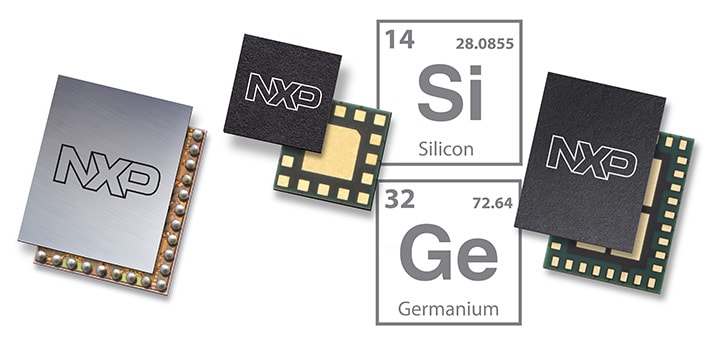In the world of high-performance RF, where tiny differences in operating characteristics can make
or break a design, the process technology used to produce semiconductor components has always had
an important role to play.
For some time now, several technologies have been used for RF, including RF CMOS, GaAs, GaN and
QUBiC SiGe. But as requirements continue to evolve, and tolerances become tighter and tighter,
SiGe BiCMOS is emerging as a frontrunner. Here are ten reasons why QUBiC SiGe is such a compelling
choice for the future of high-end RF:
- QUBiC SiGe uses silicon
Unlike III-V technologies, such as gallium nitride (GaN) and gallium arsenide (GaAs), which use
alloys that contain elements from groups III and V in the periodic table, QUBiC SiGe is a
silicon-based technology. III-V technologies don’t always deliver the same quality or
manufacturing consistency as their silicon-based counterparts and, as a result, aren’t receiving
the same level of investment as silicon. For example, present-day R&D efforts tend to focus more
on silicon than III-V, and silicon-based fabs have steadily moved from 8-inch to 12-inch wafers
as part of their preparation for the future. Silicon-based technologies can also be seen as
safer for the environment, since III-V technologies require the use of arsenic, a particularly
dangerous material.
- QUBiC SiGe combines bipolar and CMOS in one IC
As a BiCMOS technology, QUBiC SiGe combines the high speed and gain of bipolar technology with
the simple, low-power logic gates of CMOS technology. Using bipolar for transistors, instead of
CMOS, yields significantly better transconductance, which helps the IC support higher clock
frequencies and higher core voltage, and using CMOS for interface logic makes it easier to
connect the IC to other digital components in the system. What’s more, bipolar transistors have
no oxide breakdown, because they use a PN junction, and this makes for a robust application.
When dealing with Low Noise Amplifier (LNA) inputs, bipolar transistors also make it easier to
meet the industry standard of 50 Ω for impedance matching.
- QUBiC SiGe enables 5G mmWave operation
One of the biggest changes, as we move from 4G to 5G cellular, is the use of millimeter wave
(mmWave) frequency bands, including those above 26 GHz. (Some bands between 10 GHz and 15 GHz
are also being considered.) Working in this new part of the spectrum presents a new set of
challenges for RF components, and some process technologies simply can’t keep up. GaAs, for
example, only has a usable frequency up to around 10 GHz, but QUBiC SiGe excels in higher
frequency bands. As measured by transit frequency (tF), QUBiC has a usable frequency up to 300
GHz, and the potential to reach 500 GHz and beyond.

- QUBiC SiGe improves WLAN performance
QUBIC SiGe offers the best tradeoff for linearity, output power and efficiency, and that makes
it an excellent choice for RF products below 2 W output power. That includes WLAN front-end ICs,
which operate in the 5 GHz to 7 GHz frequency band. NXP’s QUBiC SiGe WLAN portfolio is
recognized for its optimized combination of linearity and efficient power conversion, at each
power level.
- QUBiC SiGE supports 3-5 V supply voltages
In general, the smaller the technology node, the smaller the transistor and the lower the supply
voltage. This helps in the digital domain, since a lower supply voltage helps reduce power
consumption. But in the RF domain, where standards typically define the range and output power
of a wireless application, reducing the supply voltage along with transistor size can cause
problems. In mmWave applications, for example, the maximum amount of power that can be radiated
from an antenna (EIRP) is pre-defined and depends heavily on the amount of current flowing
through the power amplifiers. With QUBiC SiGe, a 3-5 V supply keeps current lower than with a
purely CMOS-based technology, making it easier to meet the specified requirements.
- QUBiC SiGe is better at isolating digital and RF functions
In mixed-signal ICs, which combine digital and analog/RF operations, it’s important to isolate
fast-switching digital signals, to reduce interference and preserve signal quality in the
analog/RF domain. QUBiC SiGe uses a technique, called deep trench isolation, to prevent current
leakage between adjacent device components. Deep trench isolation is not available in most
baseline CMOS technologies, and is a more cost-effective approach than using insulator-based
substrates.
- QUBiC SiGe supports more digital circuitry on-chip
The latest QUBiC SiGe technology is based on a 130-nm CMOS platform. The small geometry makes it
possible to add a high degree of digital circuitry to an RF chip, so more sophisticated on-chip
control interfaces can be used to manage functional blocks of RF circuitry. With QUBiC SiGe, as
much as 40% of an RF chip’s area can be used for digital functionality before needing to add a
dedicated digital SoC to the design.

- QUBiC SiGe delivers superior noise performance
Low-frequency noise is a source of phase noise in oscillators, and a key factor in improving
performance in high-speed RF applications. The characterization and modeling of low-frequency
noise, especially 1/f noise, shows that QUBiC SiGe outperforms standard MOS and III-V, with
consistently lower ratings than either technology.
- QUBiC SiGe supports integrated RF switches
A number of front-end IC designs benefit from having on-chip RF switch functionality. With QUBiC
SiGe, the combination of deep trench isolation, a high-resistivity substrate and high oxide
breakdown numbers makes it possible to integrate high-quality RF switches onto the IC. The
voltage sustainability of these on-chip RF switches is as high as 50 dBm, with extremely low
loss.
- QUBiC SiGe improves current handling
Compared to CMOS technologies, QUBiC SiGe does a better job of handling current. This is another
advantage of using BiCMOS technology. Bipolar transistors are vertical transport structures that
use a small channel. This forces current to flow vertically, making it possible to handle larger
currents in a small area of silicon.
When it comes to high-performance RF applications, NXP’s proven QUBiC SiGe technology delivers
many advanced features. In-house optimization, in a world-class manufacturing environment,
yields a single process for combining low noise, RF switching and high-power capabilities. To
learn more, visit nxp.com/rf.






